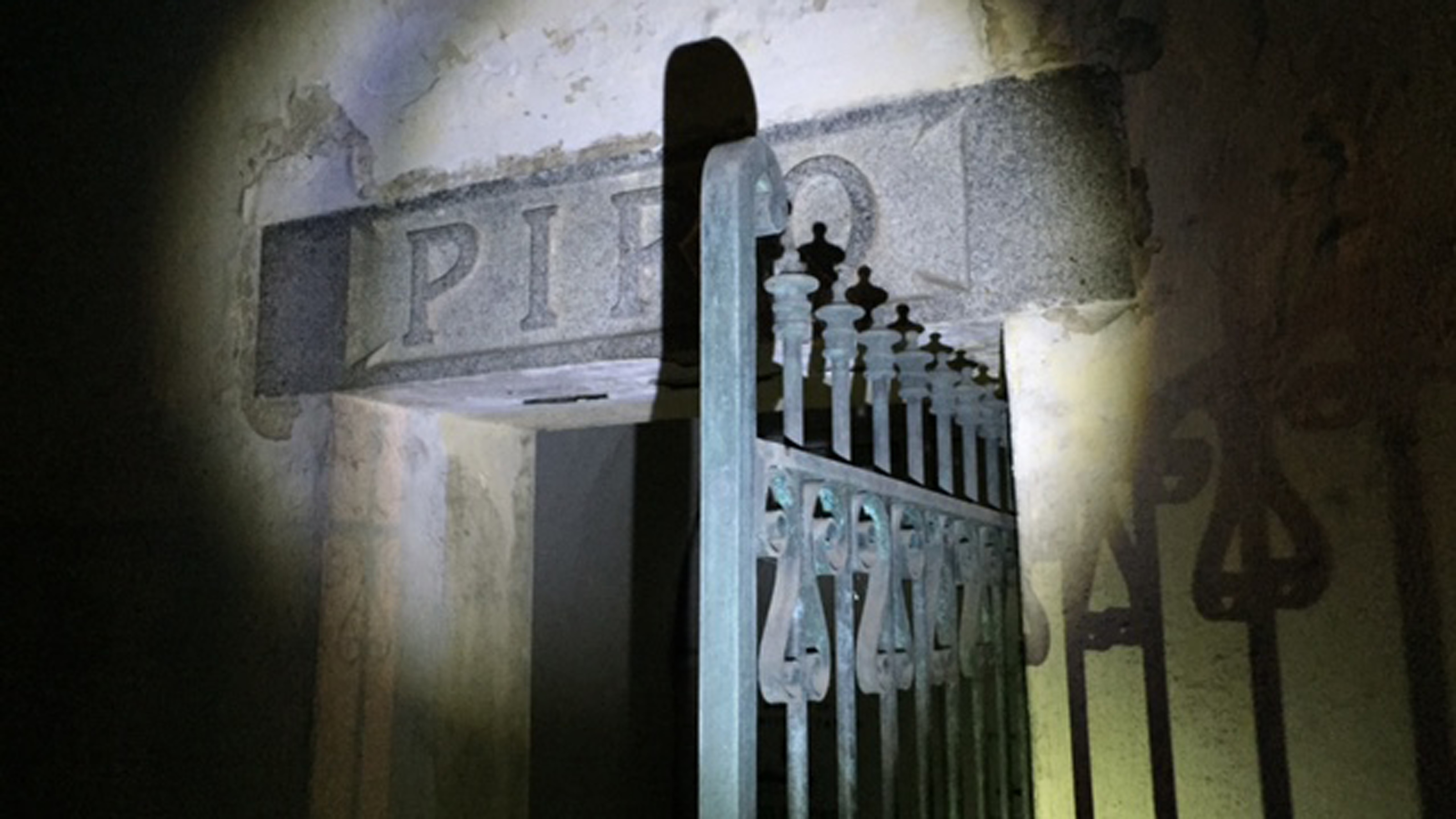In Gaelic culture, Samhain—from which our modern Halloween evolved—is the end of the harvest season. It is also the time when the veil between the living and the dead is lifted and communication between the two is encouraged. When I was a child, I always imagined that veil to be a thin, gauzy membrane; where it existed, I had no idea. My Memaw said dogs could envision spirits, and if you looked between their pricked ears you could see whatever apparition had caught their attention. I tried this (often) and was disappointed every time.
The point is, I believe that the veil exists. And I want someone—something—to prove that my beliefs are not misplaced.
So Saturday night, I traveled deep into Brooklyn for Atlas Obscura and Green-Wood Cemetery’s Into the Veil, an annual event held at the almost-200-year-old cemetery.
Into the Veil is no brand-sponsored party in a cordoned off area of the cemetery, spattered with beer and wine and stuffy forced mingling. Cocktail attire is encouraged, as are shoes appropriate for walking the 478 acres of tombstones—and the thirty mausoleums and crypts constructed because the cemetery’s Victorian builders were terrified of being buried alive. A tall gothic revival structure that looks straight out of a Transylvanian set sits at Green-Wood’s entrance. Built of Belleville brownstone in 1861, it’s meant to serve as a gateway between the living and the dead. And the dead are luminaries here: artists like Leonard Bernstein and Jean-Michel Basquiat; spiritualists and magicians; wealthy New York families with names (Cooper, Schermerhorn, Clinton) that are part of NYC’s everyday lexicon.
And this evening, the entire grounds were at our disposal.
Oh, but one small thing. There is little to no electric light in Green-Wood. No street lamps to illuminate your way down the winding roads and tiny paths. Nothing to show you what surprises your feet might find. There’s nothing but a flashlight, which you must bring, and thousands of candles sprinkled like fairy lights throughout the cemetery.
After a while, the darkness doesn’t matter. Your eyes adjust, pupils widening so that the occasional flash of electric light is blinding. No one uses their flashlights, really, unless they are studying the vexing cemetery map, and even that feels somewhat offensive, light intruding upon darkness in that way. But the darkness also plays tricks on you: is that a person moving among the tombstones, or a tree branch? Is that a person crouched at the edge of one of the winding paths, or a marble statue?
I wanted something to speak to me and lift the membranous veil, to show me the secrets of the afterlife and quell the fear of death.
Oftentimes, it was both. Because sprinkled throughout like Easter eggs were various performances. Finding each one was like discovering a secret shared only amongst a handful of people who also happened to stumble upon it. A brass band set up at a fork in the road. Acclaimed multi-instrumentalist Takuya Nakamura played in the Dewey Mausoleum. Animal lanterns danced silently along Sylvan Water, Tarot readers spoke of the future in the Almond Mausoleums. A Victorian ghost (actually Natalia Paruz, known as The Saw Lady) and her eerie, warbling music spilled from a tiny candlelit chamber. Psycho-mambo group Gato Loco closed out the evening in the rarely-opened crypts, their music wafting for acres, drawing people in like the Pied Piper.
By the time I made it to the Whitney Mausoleum, where a series of talks (like one from author Alex Mar, who was reading from his book Witches of America) were taking place, I didn’t even need my flashlight to look at the map anymore. Which turned out to occasionally be a mistake: I now understand the frustration (and terror) of movie characters lost in the woods, exclaiming when they pass an innocuous tree stump, “This is where we started! We walked in a circle!”
I did that three times, after which I decided to sit in the chapel for a while, sipping hot wassail and watching old silent cemetery films set to a live organist. I thought about why I was there. Not for cheap thrills or the (very, very good) cocktails. Nor for the Instagrammable moments, like the people posing in front of mausoleums with serious looks on their faces. “Get one of me in the top hat,” I heard them say.
No. I came because I believed. I wanted something to speak to me and lift the membranous veil, to show me the secrets of the afterlife and quell the fear of death.
As I made my way toward the exit, I veered off one of the small winding paths and picked my way among the tombstones on Battle Hill, the highest point in all of Brooklyn. Although my eyes were still fooling me, I knew I was alone. Until I heard footsteps behind me, heavier than mine. For the first time I thought about how easily someone could disappear in a place like this.
I wasn’t afraid. I was excited. But when I turned to catch what I hoped was some rift in the veil, some wayward spirit finally showing itself to me, there was no one there. FL









